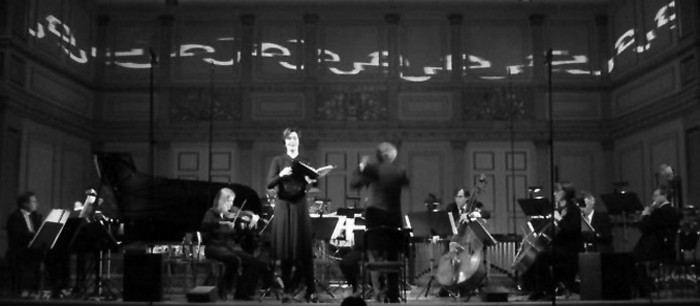As early as the middle of the 1980’s, Sonanza began to perform works with the interactive support of computers and electronics. The theatrical element was developed in collaboration with the singer and actor Mikael Samuelsson during a performance of Peter Maxwell Davies’ Eight Songs for a Mad King. The presence of visual art had one of its high-water marks in Music for a cathedral builder, with the music of Thomas Jennefelt and art by Kjell Åslund.
The proof of the importance of Sonanza for new Swedish music came quickly. In 1982, Sonanza appeared for the first time, and immediately made a breakthrough with Arnold Schönberg’s Pierrot Lunaire. In 1985 the ensemble won the Swedish Phonogram Prize, and four years later it was awarded Edition Reimers’ prize Kristallen den fina.
Another form of proof has come in concrete musical form: over the years the ensemble has premiered about 250 works. Of course, ensembles for new music usually work in close collaboration with composers, but Sonanza has gone a step further, developing a method of working where workshops and seminars have been prominent features along with their concerts. In 1994, their musicians were the Ensemble in residence of Concerts Sweden, with precisely this method of working.
During the 25 years of its existence, Sonanza has established itself as one of Scandinavia’s leading groups within its genre. They have toured to festivals in the US, England (Huddersfield), Germany, and France. Previous appearances on CDs along with their own portrait recordings amount to 10 productions, primarily with Swedish and Nordic new music.
The leader of the ensemble is Jan Risberg, originally an oboist, after which he was educated as a conductor at the Sibelius Academy in Helsinki under Jorma Panula. He is now a teacher in conducting and new music at the Royal University College of Music in Stockholm. Remembering that Sonanza first consisted of the very flexible Pierrot Lunaire setting, it is worth noting that no less than half of the ensemble is still around from that first performance. This is yet another sign of continuous work in harmony with aesthetic discovery.



